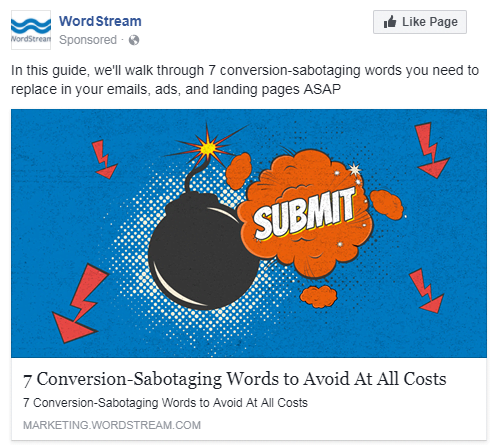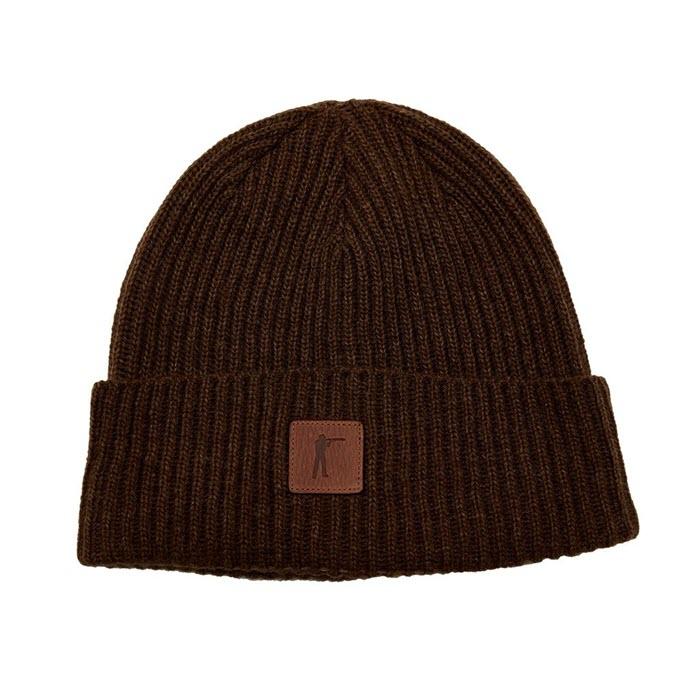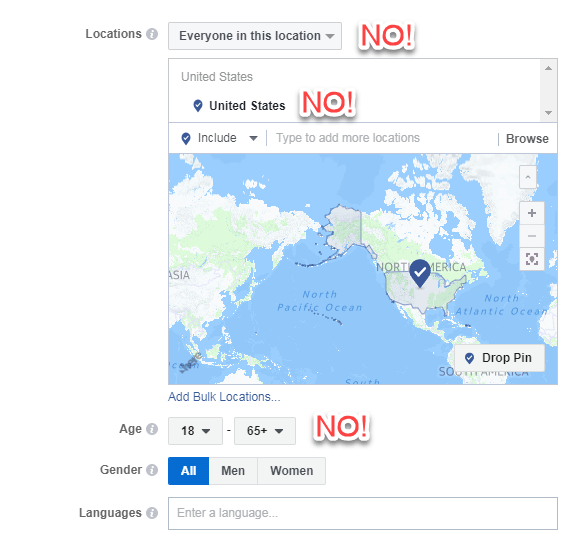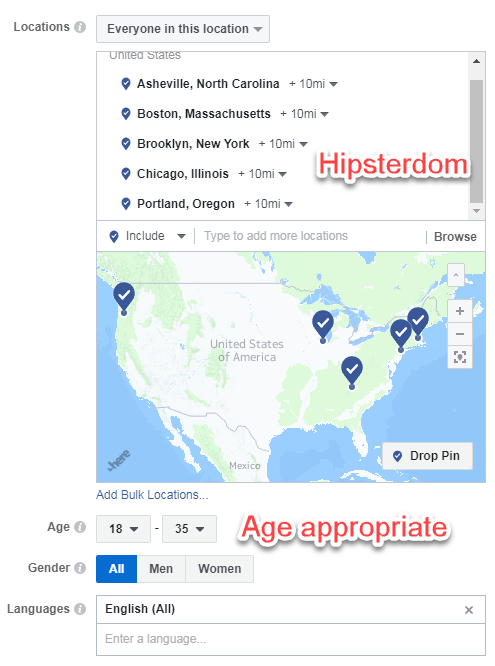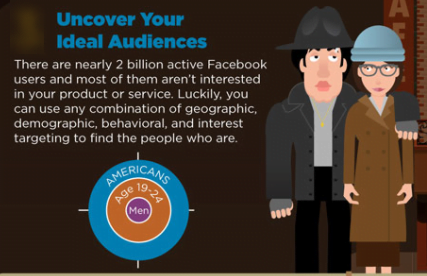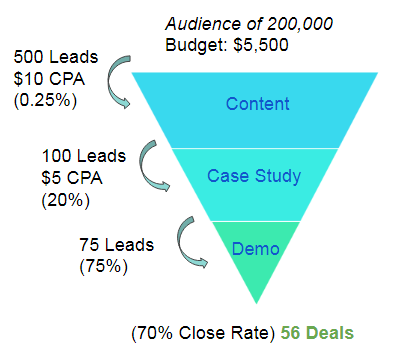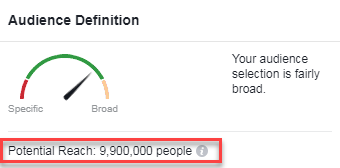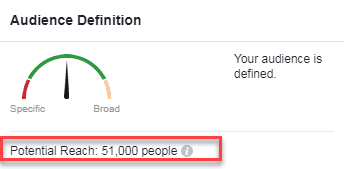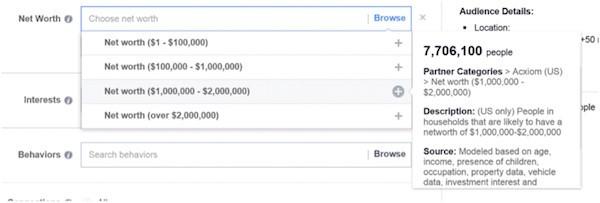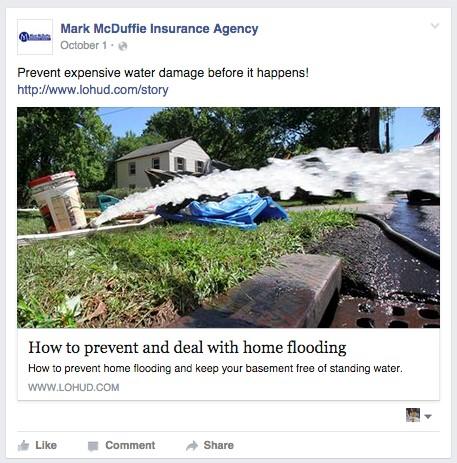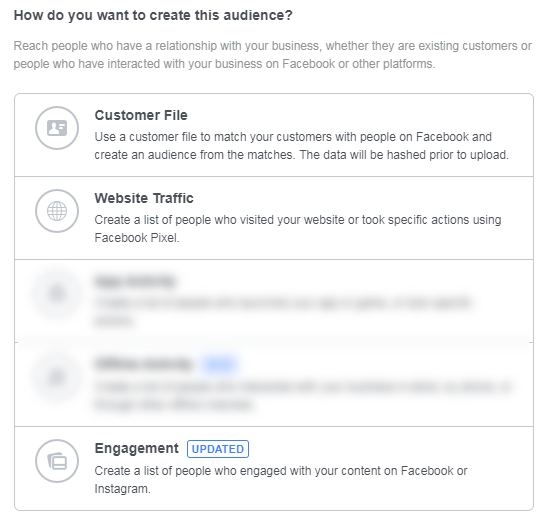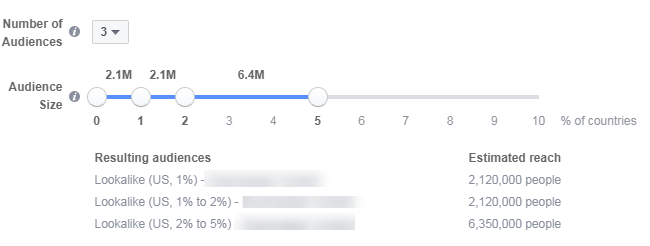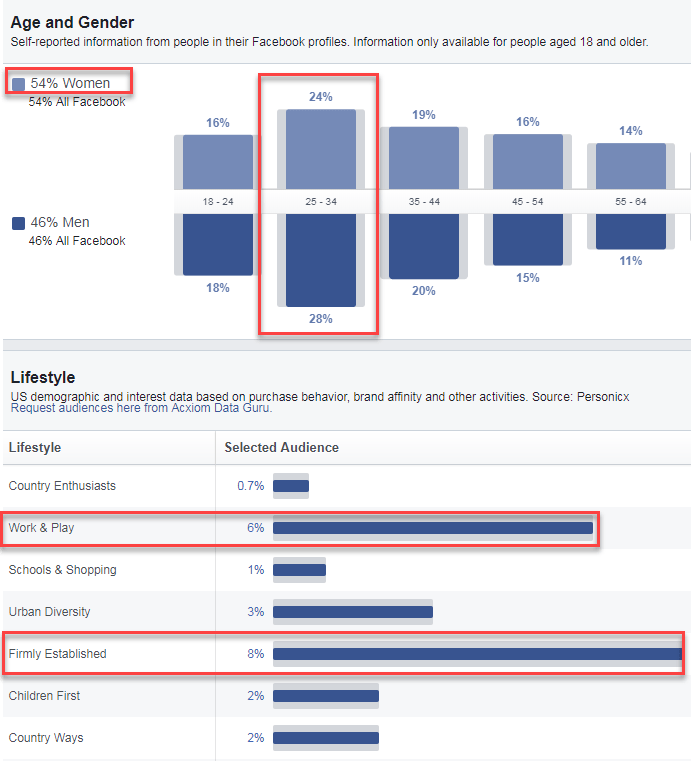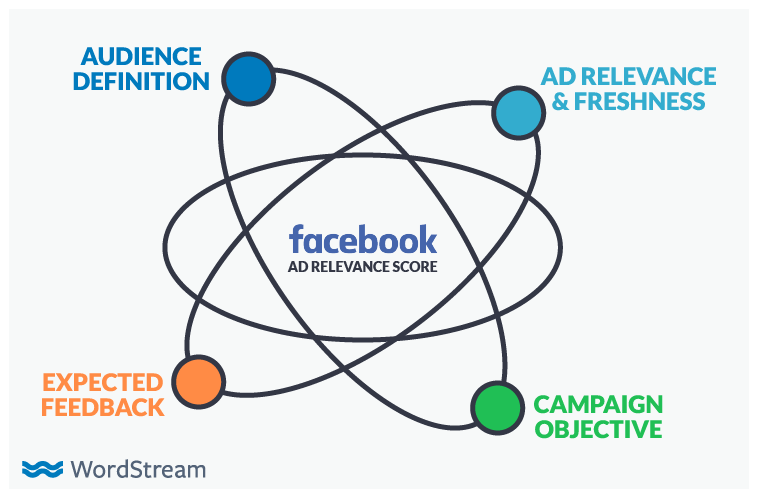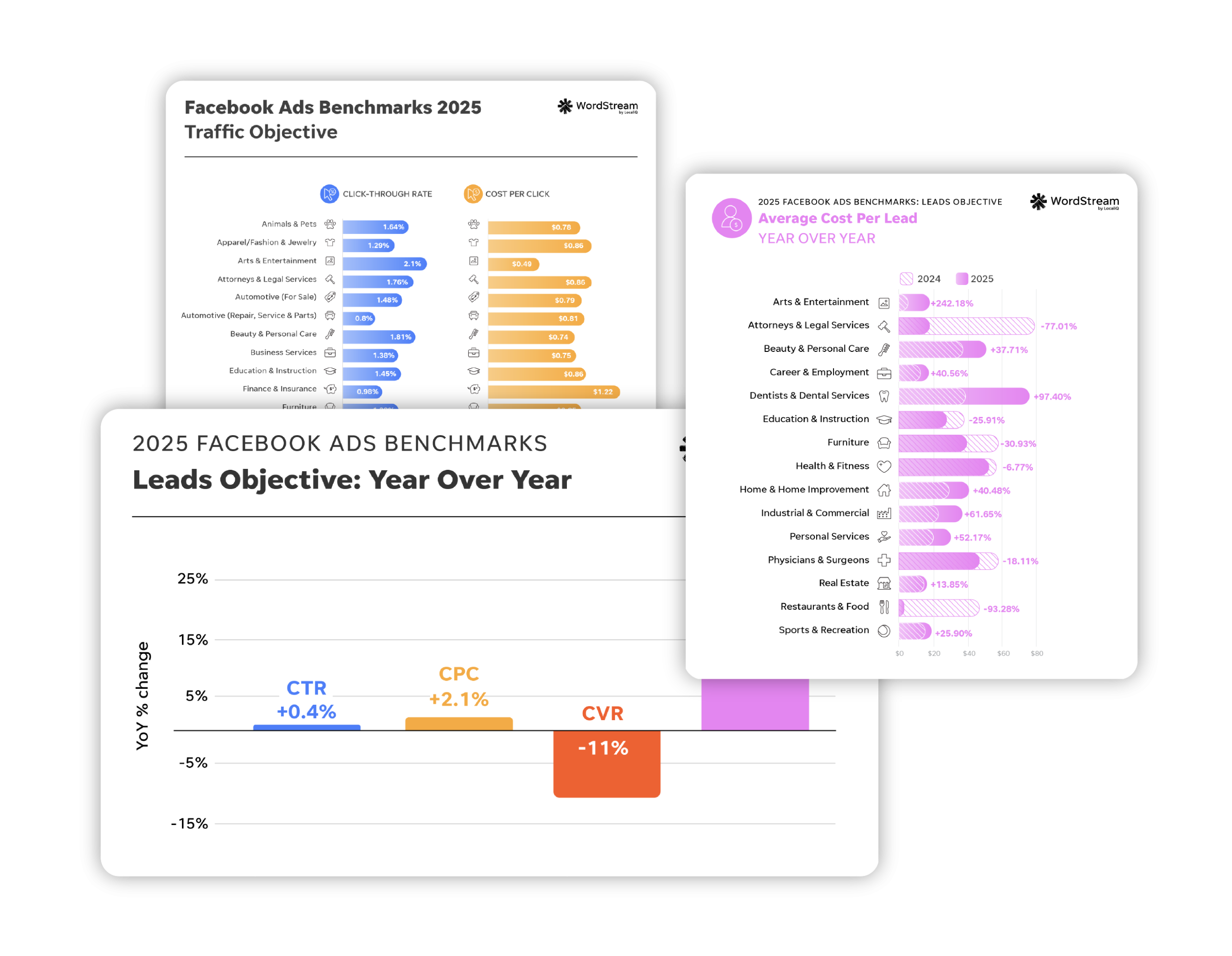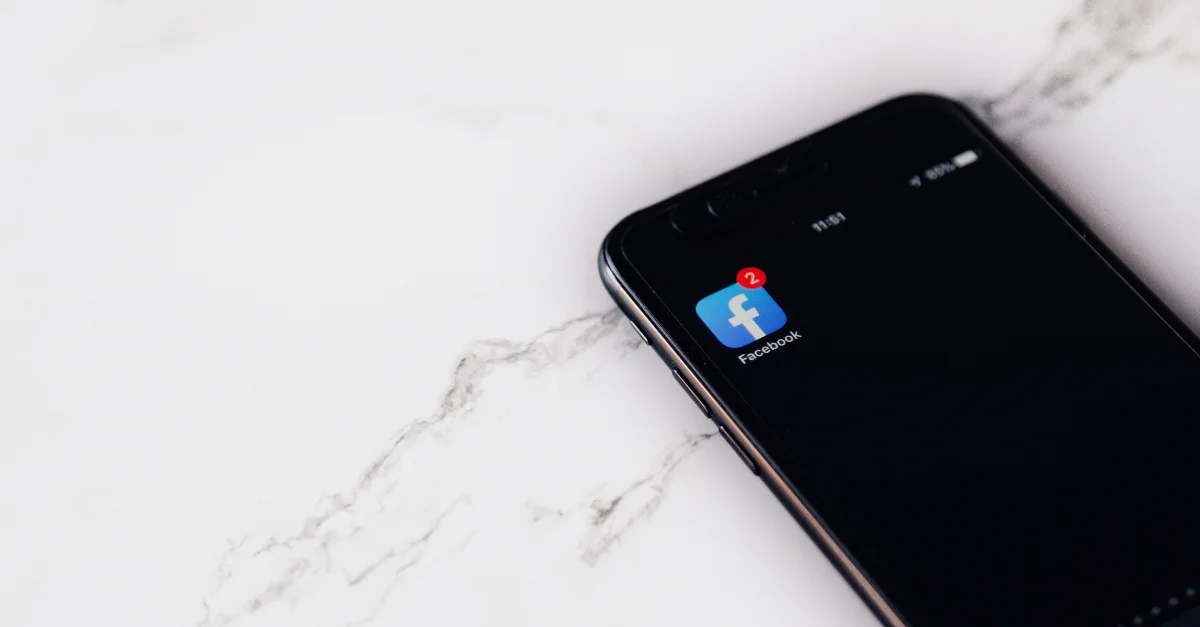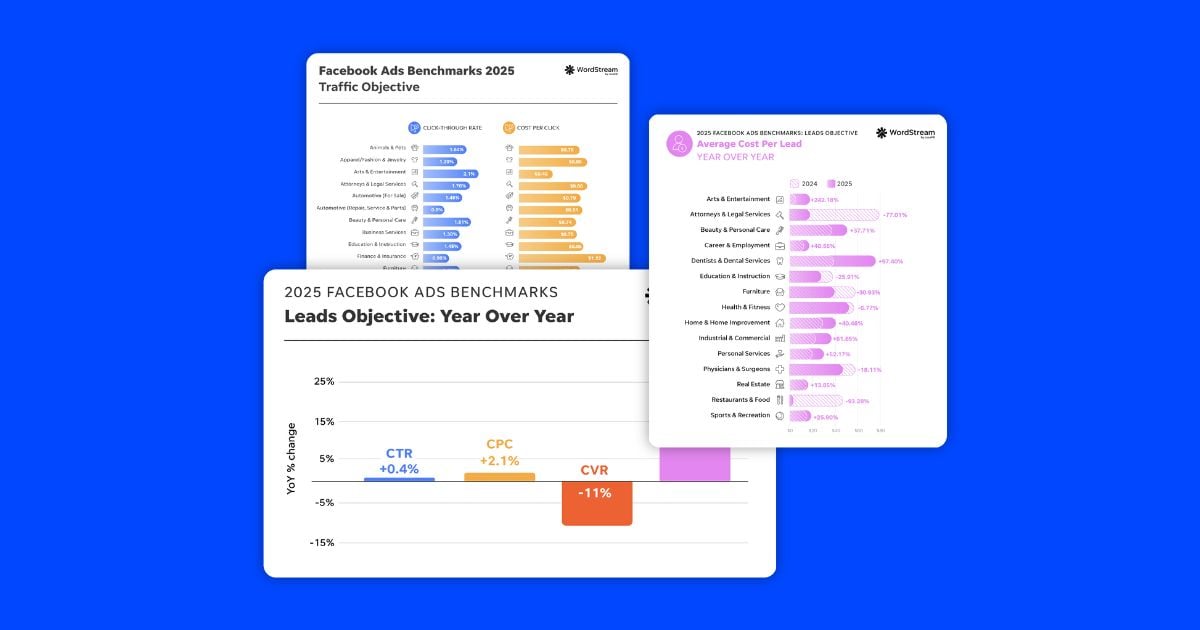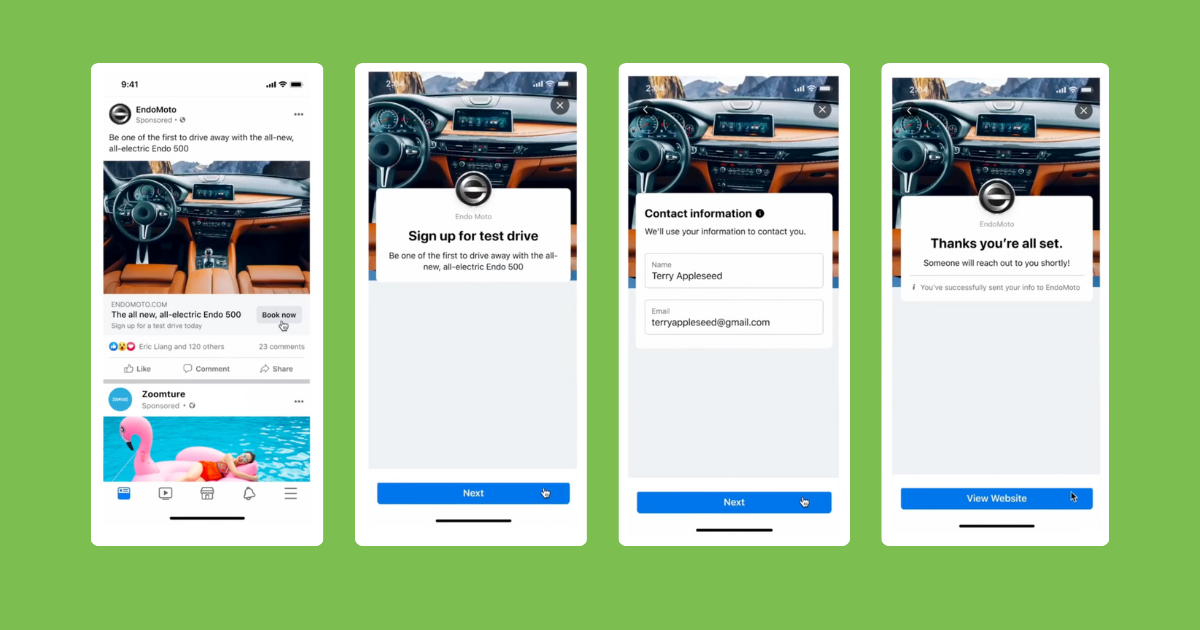
Creating Facebook audiences isn’t rocket science, but with the seemingly endless waves of targeting options available, it sure can feel like it.
Getting ROI from your Facebook spend is all about focusing your budget so only relevant, qualified audiences see your ads. So how do you find the right audiences on Facebook, whatever your industry and business type?
Today, I’m going to teach you how targeting on Facebook works, how to optimize your ad sets for success, and how to use Facebook Audience Insights to learn more about your prospects.
Introduction to Audience Targeting on Facebook
Most people don’t wander around on Facebook with their intent to purchase stamped across their foreheads.
When it comes to AdWords, the opposite is true, right? Usually, someone who types “buy fine point Sharpie pens” into Google is on the hunt for some insanely dope, reasonably priced writing utensils. But on Facebook, while a ludicrous array of information can be leveraged to create hyper-granular audiences, the intent component usually isn’t there.
In fact, Facebook doesn’t even offer keyword targeting. You have to define an audience to show your ads to.
Now, this doesn’t mean that Facebook advertising isn’t useful. Quite the opposite. It’s a wellspring of opportunity for B2C and B2B advertisers alike. Facebook allows you to get reasonably interested eyeballs on your product or service and nurture them through dynamic, engaging content from initial exposure until the day you can close a deal (sell a widget, etc.). It’s amazing for building brand awareness and feeding your funnel.
Of course, doing so effectively requires a nuanced understanding of who you’re targeting and, more importantly, how you’re targeting them. This means striking a balance between broad and specific audiences, effectively turning your Facebook advertising efforts into a self-contained marketing funnel.
Let’s take a closer look at what I mean by “broad” and “specific” audiences.
Targeting Broad Audiences with Facebook Ads: Best for New Campaigns, Brand Awareness, & Gathering Data
You can use Facebook ads to target all two billion (and counting) users with a single offer. This is not what I mean by “targeting broad audiences.” This is just “dumb.” Instead, I’m referring to using core audiences—those created using Facebook’s suite of targeting options—to put your brand in front of new prospects. Here’s an example of a broad, top of funnel content offer:
By broadly targeting people on Facebook with tertiary interest in digital marketing and presenting them with this ad, we can learn about their needs and begin to build more relevant audiences.
How does this work? Simple: you just gotta trust Zuck.
Targeting broadly gives Facebook a good chunk of power. It requires that you trust one of the planet’s wealthiest entities (in terms of straight cash and user data) to algorithmically determine which subsets of humanity could be a fit for your product or service. While it can be scary to cast a wide net, this approach can help you find potential customers you’d never have known existed otherwise. You can also use the data you glean from broad audience targeting to formulate more specific audiences further down the funnel.
Targeting broadly then digging into Audience Insights—check out this killer post from Moz about using this resource to create audience personas—and your reporting will allow you to paint a better picture of the Facebook users who interact with your ads in a positive way. Using their overlapping demographic and psychographic characteristics, you can pair new, optimized core audiences with targeted ad creative to incite more conversions.
Broad Facebook Audience Targeting in Action
Let’s say you sell high-quality winter hats to people in the United States. They’re woven from the silkiest alpaca yarn. They’re affixed with a neat little leather patch emblazoned with your hipster-bait logo. They retail for $59, a steal, really, when you consider the artisanal steeze dripping from each cross stitch.
You’re looking to take your luxury winter wear brand to the next level. It’s time to start spreading brand awareness, and there’s no better way to do so than by advertising on Facebook.
Now, it would be foolish to target people of all ages across the United States…
While your creative might appear in the newsfeed of an unsuspecting Iowan grandmother in search of the perfect Christmas gift for her Somerville-dwelling grandson, Braxton, odds are your ad creative won’t be particularly relevant to every American. This total lack of targeting is akin to showing a football-themed Budweiser commercials during The Bachelorette.
But launching a branding initiative in select areas, to a targeted age range…
…is a phenomenal way to enhance brand awareness among potential prospects.
Now, some caveats.
You’re not going to run with just this targeting in perpetuity. You’re going to use it to inform the creation of more targeted audiences to whom you’ll advertise with engaging, audience specific ad creative. Think of this wide but informed net as the Facebook equivalent of the Display network or a well-placed billboard. Pairing this information gathering/brand building strategy with more sales-centric targeting further down the funnel will help you to create a steady stream of prospects for your business. It shouldn’t occupy a large portion of your overall advertising budget, but allocating a small percentage of your Facebook spend to broad audiences like this one will allow your business to benefit from the intelligence of Facebook’s advertising algorithm.
Who should target broadly on Facebook?
Everyone!
Provided you’re not ballin’ on an extremely tight budget, broad audience targeting will expose your brand to net-new prospects: people who’d never have known about you otherwise.
That being said, your ad and offer need to align with your broad audiences’ lack of intent. Your goal here isn’t to sell a hat or close a deal today: it’s to gain exposure and fill your funnel. From there, you can create new core and custom audiences, steering Facebook users towards making a purchase as you learn more about their characteristics, wants, and needs.
Even though you’ll likely see higher engagement using broad targeting (simply due to the number of folks you’ll reach), the majority of your Facebook advertising budget should still be assigned to targeted audiences that can be tied to actual business value. Speaking of…
Targeting Specific Audiences with Facebook Ads: Best for Driving Cost-Effective Conversions
Targeting specifically means, well, just that.
You give Facebook a strict set of parameters. They serve your ad creative to a smaller subset of users than you’d reach with broader targeting. They purchase your wares. You laugh all the way to the bank.
Here are a few of the ways you can define these more specific audiences:
- Curate a list of job titles your prospects tend to hold, pairing it with an affinity for vegan pizza and The Clash, then layering these atop specific locations
- Leverage custom audiences based on actions taken on your website, like webinar registration or content downloads
- Create a 1% lookalike audience using your top-spending customers as the seed audience
These (and literally an infinite combination of other specific targeting methods) can help you skip a few stages between a prospects thinking “hmm, this looks neat” and punching in a credit card number.
Per Facebook, specific audience targeting “may lead to a potential audience that’s smaller, but hopefully also to one that’s more interested in what you’re advertising than a larger and broader audience would’ve been.”
By significantly reducing the number of people in each audience, you can cater your creative to the characteristics of and actions taken by a group of prospects, improving your chances of success. Of course, you also significantly decrease your ability to reach large swaths of Facebook-using public. This is why it’s so important to pair broad and specific audiences, using the former to funnel new prospects towards the latter.
Specific Facebook Audience Targeting in Action
As you already know, there are an uncountable number of ways through which you can define an audience in Facebook. “Specific” does not explicitly refer to the use of custom or lookalike audiences but, rather, a well-defined set of Facebook users. Basically, anything that takes control away from Facebook and can ratchet this:
Down to this:
Can be defined as “specific” audience targeting. The three main ways to accomplish this are using layered targeting, custom audiences, and lookalike audiences.
Layered Targeting
Facebook allows you to layer myriad targeting options on top of one another to create new, granular core audiences.
The advantage of doing so is obvious: you can tailor your ad creative to the overlapping characteristics of small audiences to show prospects how your product or service addresses a specific need.
For example, if you sell homeowners insurance, you’ll want to target people who purchased a home recently. But more specifically, you can use layered audience to create variations of the new homeowner audience based on characteristics like home type (apartment, condo, single family, multifamily), home value, and household composition.
This ad, for example, would be great for folks who’d just bought a bungalow, but completely wasted on apartment-dwellers.
By breaking recent home buyers into segments using layered targeting, you can serve completely different ads to the pair of twenty-somethings buying a one bedroom apartment in Brooklyn, the Midwestern family of eight, and the recent divorcee with a beachfront condo in Malibu. This persona-specific creative can be an excellent way to account for Facebook’s lack of intent, bolstering conversions in the middle of your sales funnel.
Custom Audiences
Facebook’s core targeting options can feel limitless but sometimes, the best way to create an audience isn’t through latent characteristics. What’s better?
Action, people. Action.
Custom audiences allow you to target Facebook users based on:
- Customer file (email addresses you upload)
- Website traffic (provided the Facebook Pixel is on your website)
- App activity (pretend this doesn’t exist)
- Engagement (explicit action taken on either Facebook or Instagram)
Of the four possible sources for custom audiences, the most valuable are, without a doubt, customer file and website traffic. (Note that custom audiences are often the smallest audiences you can create on Facebook. This makes it difficult for Facebook to serve your ads unless they attain supreme levels of engagement among your audience—as reflected in your Facebook ads’ relevance scores)
The “customer” component of customer file audiences is, uh, negotiable. You could feasibly upload any email list and reach Facebook users whose email credentials match. Use these custom audiences to upsell existing customers, offer a product demo to people who downloaded a specific piece of content: the possibilities are endless. Ditto for custom audiences generated based on website traffic; use Google Analytics to determine which pages people tend to visit, ensure the Facebook Pixel is on those pages, create an audience, and serve creative that elaborates on the content prospects viewed.
It’s like shooting fish in a barrel.
Lookalike Audiences
Facebook lookalike audiences are the cream cheese frosting atop the nut-packed carrot cake that is Facebook advertising. This is fact, not opinion.
While custom audiences are generally limited—since you need to upload a list or supply users based on on-site in-app actions completed—lookalikes are simply aggregated users whose characteristics mirror those of a selected source audience. The degree to which they match can be altered (with 1% representing a near-facsimile and 10% being more like a second cousin).
The “source audience” for your lookalikes can be any Facebook audience you’ve already created; to maximize their value, though, you should use converters (based on the Facebook Pixel) or customer email addresses. It’s no use to create a lookalike of people who, after seeing an ad as a member of one of your broader audiences, have told you to [expletive] yourself.
Who should use specific audience targeting on Facebook?
Everyone (for real this time, though)!
Lookalike audiences are one of the most effective ways to derive immediate value from Facebook ads. Layered audiences are a great way to glean some value from Facebook’s inherent intelligence without spending a ton of cash. And custom audiences are the perfect way to implement mid and lower funnel audiences into your Facebook advertising strategy.
***
Now that you’ve got a handle on the differences between broad and specific Facebook audience targeting, here are three tips to help you use them both more effectively.
Tip #1: Achieve (and Act On) Statistical Significance ASAP
Statistical significance refers to the point at which you’ve accrued enough data to make an educated decision regarding performance. It’s integral for both broad and specific audiences, but for vastly different reasons.
With broad audiences, you need to determine and act on statistical significance quickly to avoid hemorrhaging ad spend on massive swaths of tangentially interested Facebook users. This is where Audience Insights can really become an invaluable tool in your arsenal.
When it comes to your more specific audiences—the ones that stand to garner conversions quickly—tweaking your targeting and ad creative based on performance will allow you to ensure that small, valuable audiences aren’t growing frustrated with your efforts. This is the best way to determine whether an audience is working or not and, subsequently, begin the never-ending process of Facebook conversion rate optimization.
Now, it can be tempting to split your campaigns into dozens of ad sets based on this information. According to Facebook, this is a big no-no:
“You want to segment your campaign into many small ad sets to see which one performs best and then use that as a model for future ad sets. However, with that many ad sets, you’re unlikely to get a statistically significant number of results for any one of them anyway.”
Too broad and you’re white noise. Too narrow and significance is unattainable. Instead, use engagement data from broad and specific audiences to inform your ad creative. If something flat-out isn’t working, use those Audience Insights to tweak your targeting and reengage your prospects.
Tip #2: Base Lookalike Audiences on EXTREMELY Valuable Sources
As I touched on earlier, sources like post comments, Facebook business page engagement, or random email addresses scrawled in a notebook you found in a TGI Fridays are not viable foundations for your Facebook lookalike audiences. There’s no way of knowing whether their characteristics represent discernable business value that you’d like to mirror. But that’s not the only issue. Lookalike audiences tend to be smaller than the broad, core audiences we talked about a thousand words or so ago.
As such, their use can hamstring Facebook’s ability to serve your ads to the most relevant users in each audience. This isn’t a problem if you know most of an audience is comprised of bona fide prospects, but don’t hustle backwards when you can avoid it. Instead, use the most valuable sources you’ve got to create lookalike audiences. Leverage the Facebook Pixel and proprietary data from your CRM to distinguish between your “oh neat, a link [click] eh” people and those who have already paid for your product or service.
If you’re an experienced advertiser with boatloads of data, you can take this discerning attitude a step further. Distinguish between customers and great customers (top spenders, etc.) and make lookalike audiences of both groups. The former can function as a broad audience. The latter, a specific audience. As soon as they populate, you’re cookin’ with gas.
Tip #3: Quality Is More Important than Size (Particularly with Custom Audiences)
This ties in with my last point, but it’s worth repeating: quality beats quantity. Period. One key way of determining quality (outside of, you know, conversions and revenue) is by checking Relevance Scores.
Relevance Score is Facebook’s measure of the quality and engagement level of your ads. Your Relevance Score is important because it determines both your cost per click on Facebook and how frequently Facebook shows your ad. While it can be difficult to maintain a solid Relevance Score in an ad set with broad targeting, it isn’t impossible: it just requires an understanding of your audience and perpetual testing.
Paired with a compelling offer and engaging ad creative, a quality audience of 100 people is better than 10,000 randos any day of the week.
Final Thoughts
Remember: Introduce your brand to an array of prospects with broad audience targeting, then sell to them with specific audience targeting.
Facebook ads aren’t easy to wrap your head around, but with an understanding of audience creation and a cohesive targeting strategy in place, you’ll be well on your way to paid social success.


